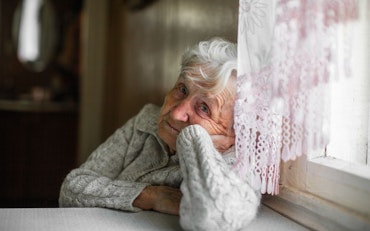Are older people spending more than they can afford to?
Peak advocacy body for older Australians, Council on the Ageing (COTA) Australia, released the third annual State of the Older Nation report, which outlines a tough road ahead for the ageing population.

Data shows that many older Australians feel that things have gotten significantly worse for their financial situation, but the numbers say they’re spending more mainly to catch up on the past couple of years. (Source: Shutterstock)
Peak advocacy body for older Australians, Council on the Ageing (COTA) Australia, released the third annual State of the Older Nation report, which outlines a tough road ahead for the ageing population.
Report which surveyed 2,750 Australians aged over 50 suggests:
- 45 percent of older Aussies believe that things are getting worse for them
- One in three older Australians also report they have experienced some form of age related discrimination, particularly whilst seeking employment
- Six out of ten survey participants said that the cost of living has left them financially insecure or stressed
- One in five were worried about the future
COTA Australia Chair, Jane Halton AO PSM, says that she’s pleased with the outcome of this year’s Federal Budget offering older Australians some relief, but many factors point to a need for ongoing support.
“The cumulative effect of these pressures means that many are struggling to maintain their optimism and a hopeful future outlook. We cannot leave older people feeling isolated and unsupported, we urgently need the Government to find ways to support older Australians,” Ms Halton says.
The inability to access medical services is another factor contributing to the growing sense of hopelessness among older Australians. As the population ages, the demand for healthcare services continues to grow, but right now, supply just can’t meet demand.
“Ageism is a perverse challenge which permeates the lives of older Australians and sits underlying this wider trend of growing insecurity,” says the Chief Executive Officer (CEO) of COTA Australia, Patricia Sparrow.
“The report’s findings underscore the need for the Australian Government to develop a national strategy for older people so policymakers take urgent steps to address the concerns of older Australians to ensure they are more secure and resilient in the future.”
Reported social, mental, and physical health does not seem to have returned to pre-COVID levels. Older Australians who report being in a poor financial situation are particularly affected, with financial stress being the key reason for feeling like things are getting worse.
Roughly one in four older Australians who are still working feel they will never retire, with those in financially precarious or vulnerable positions significantly more likely to feel this way.
Yet, despite the doom and gloom of the report, new data from Commonwealth Bank of Australia’s CommBankiQ has revealed that increased spending has more than doubled for those over the age of 35, compared to their younger cohort to keep up with the cost of living crisis and inflation.
“Putting our expenditure under the microscope shows we’re responding to the increased cost of living in diverse and sometimes unexpected ways,” comments the report’s author CommBank iQ Head of Innovation and Analytics Wade Tubman.
“What we’re seeing is a continued Covid rebound effect, with consumers catching up on the experiences that they missed out on during the pandemic. It seems counter-intuitive that at a time of increased cost of living pressures, consumers are choosing to boost their discretionary spending,” says Tubman.
The report, which takes a look at the collected data of seven million bank customers, shows that spending for those over the age of 75 were spending approximately 13 percent more in the past year.










